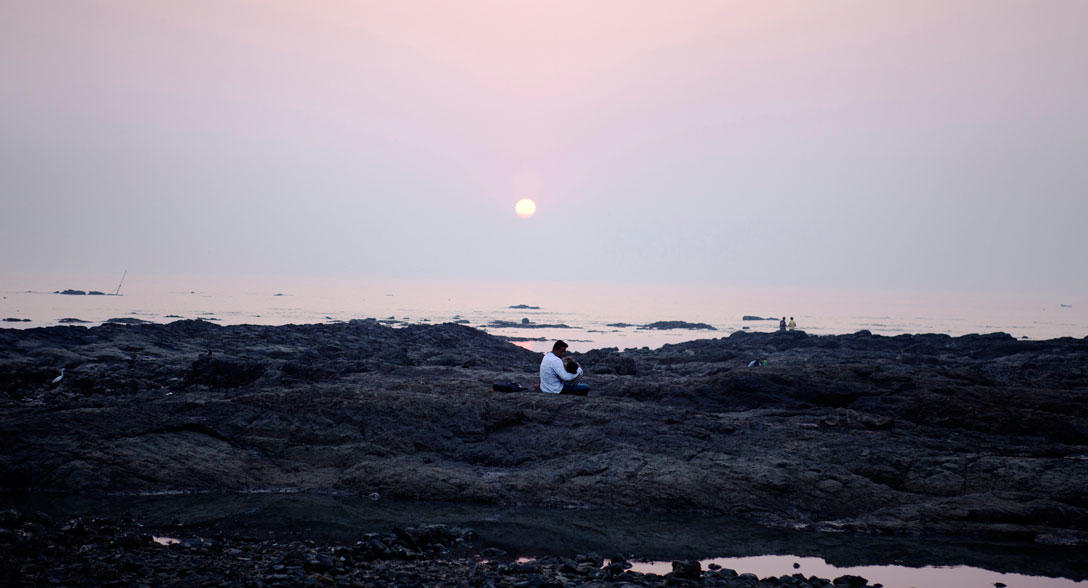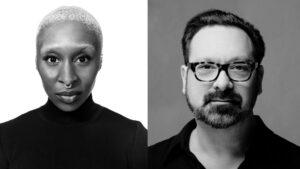“Fake Marriages for Real Homes”
Sundance Institute
Introduced by Robert Redford, “Neighbourhood” is a collaboration between the BBC World Service and Sundance Institute that supports new projects exploring the theme of “Neighbourhood,” with the resulting radio programs airing on the BBC World Service, also available as podcasts, and accompanied by visual storytelling online. The series reflects the stories of people across different locations, cultures and demographics to give insight into how communities are built from a patchwork of people and ideas, interacting with each other.
We recently caught up with the documentary makers behind these five new projects and asked them to share the insights and learnings gleaned from their experiences. To listen to the podcasts, which continue to be rolled out on a weekly basis, visit the BBC website.
Treva Wurmfeld and Amanda Spain: “At Conscience Point”

Treva Wurmfeld and Shinnecock activist, Becky Genia, walk to Conscience Point where the Shinnecock Native Americans struggle to survive in their ancestral land—surrounded by the super-rich social and financial elite of the Hamptons.
Treva Wurmfeld
- Working with audio-only surprisingly freed up a lot of the material that might otherwise end up on the cutting room floor. I enjoyed, and was grateful for, those in-between moments in the footage; a seat-belt buckled, a dog bark, or better yet when we were interrupted by cops and reporters. Many of those moments are a visual disaster but they play well in an audio programme. It was fun to see how one medium’s refuse was another’s meat and potatoes.
- I have always made work from the perspective of an artist but in this case, a more journalistic approach was necessary. BBC producer, Neil Trevithick was a helpful guide into this world of audio programming. We had to adhere to certain notions of neutrality and balance. This was a challenge considering our material but an important lesson nonetheless.
Kavita Pillay: “We Might as Well be Finnish”

As Finland marks the centenary of its independence, Kavita Pillay finds out how this Nordic nation has been profoundly shaped by its two much bigger, and very different, neighbours – Sweden and Russia.
- It’s hard to get people to speak in full sentences, but it can also feel unnatural to ask, “Could you say that again, in a full sentence?” Instead, I learned from a colleague to ask two simple questions at once. E.g. “What’s your name and where are we right now?” or “How old were you when you immigrated here and what were your first impressions of your new home?”
- I learned this after the fact, but going forward, I’ll be editing first, then transcribing. This means editing tape down so that you have about two times as much audio as your final run time. Transcribe this edited down material, then use scissors to cut up the transcript. I’m a craft nerd, and I love the idea of cutting up and physically re-arranging pieces of paper to structure an audio story.
Alexis Pancrazi: “How a Garden Grows”

In the small city of Lowell, Massachusetts, a community garden represents change. But is it change good or bad?
- I learned that I get swept up in big academic ideas, and it was a challenge for me to find the ways to make this a human story. Asking people personal questions with a microphone was intimidating. But, also, it was really important to me that it be fun. I felt like my favorite tape was always the most joyful or silly moments, like the sneeze.
Katie Fernelius and Ishan Thakore: “The Battle for the Future of Lagos”

We travel to Nigeria’s Eco Atlantic City—a city with its own private electricity, water supply and sewage system that aims to make Lagos the Dubai of Africa and fight coastal erosion. But the construction of the city has displaced the residents and patrons of the popular Bar Beach.
Katie:
- Approach audiovisual (e.g. radio or film) storytelling by scene rather than by topic. As someone who comes from a print background, I often fall down research rabbit-holes that can be interesting, but not dynamic tape. When I think in terms of character and plot, I tend to do better towards crafting a radio or film story.
- Begin with your tape and see what story emerges from your material; don’t begin with a full story in mind and try to shape your tape around it.
Ishan:
- Fail fast. We spent months perfecting a paper copy of our script before making an actual rough cut. This really crunched us for time when our deadline loomed, since we had to make many revisions and edits. It would have been better for us to make a very rough cut early and refine that audio, rather than attempting to work out all on the kinks on paper.
Shirley Abraham & Amit Madheshiya: “Fake Marriages for Real Homes”
An unmarried couple in Mumbai, India, struggle to get housing by posing as an engaged couple.
- For a while, we had been struggling to tell the story of discrimination of the housing system in Mumbai, against young people who are not married and wish to live together. It is a story of generational conflict, moral policing, and living in secret. The telling of the story had to be sensitive to young couples who constantly live in the fear of being found out and reported to their parents who live in smaller towns and villages of India. We recognized the need for intimacy and privacy, all the while, avoiding a sensational story that might potentially create a scandal.
- Working for radio also helped us get closer to sounds—about how they make us feel. The documentary is set inside a little flat in Mumbai: How could we evoke the cityscape inside a house? How could we evoke an emotional state? This is a fascinating lesson and is helping us pay closer attention to the use of sound in our films.




